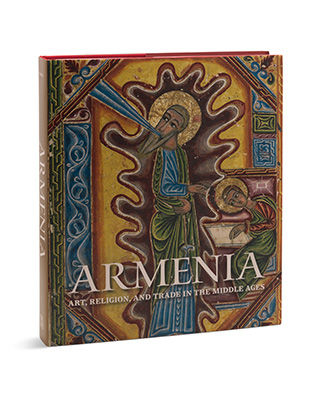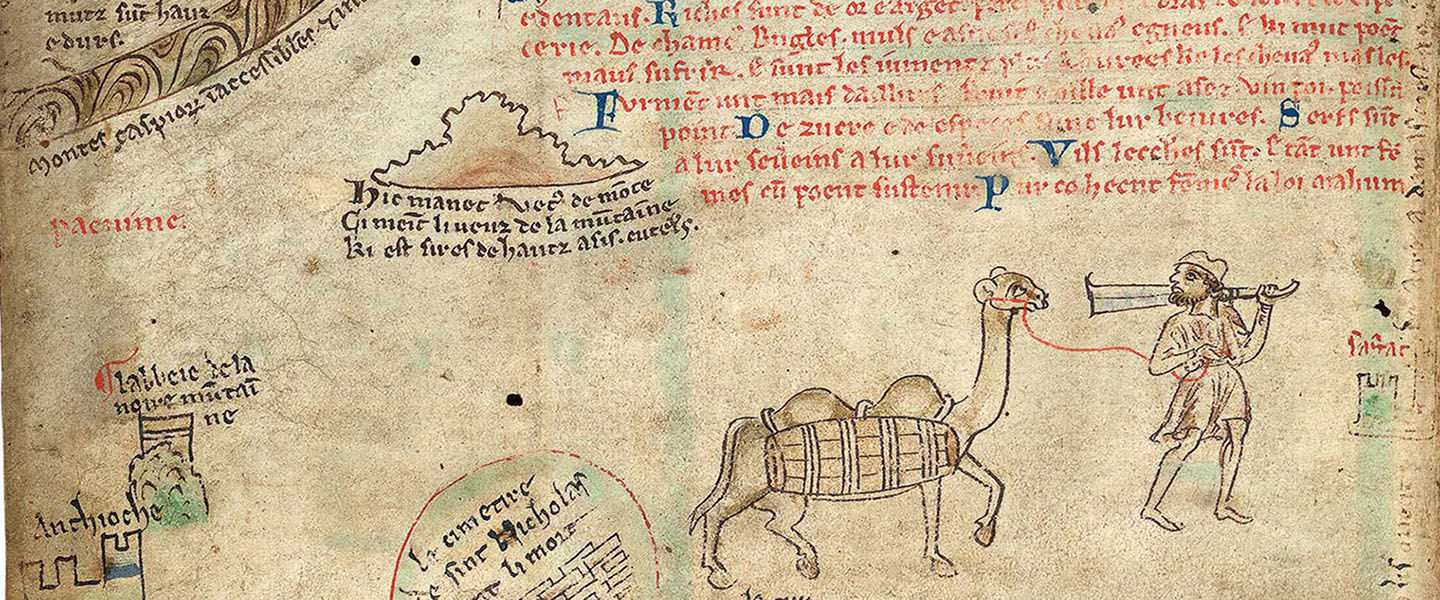
This unprecedented volume contextualizes and celebrates the magnificent works of art that illuminate the achievements of a great medieval civilization.
Buy NowThis is the first major exhibition to explore the remarkable artistic and cultural achievements of the Armenian people in a global context over fourteen centuries—from the fourth century, when the Armenians converted to Christianity in their homeland at the base of Mount Ararat, to the seventeenth century, when Armenian control of global trade routes first brought books printed in Armenian into the region.
Through some 140 objects—including opulent gilded reliquaries, richly illuminated manuscripts, rare textiles, cross stones (khachkars), precious liturgical furnishings, church models, and printed books—the exhibition demonstrates how Armenians developed a unique Christian identity that linked their widespread communities over the years.
Representing the cultural heritage of Armenia, most of the works come from major Armenian collections: the Mother See of Holy Etchmiadzin; the Matenadaran (Ancient Manuscripts); the National History Museum in the Republic of Armenia; the Catholicosate of the Great House of Cilicia in Lebanon; the Brotherhood of St. James in Jerusalem; the Mekhitarist Congregation of San Lazzaro degli Armeni in Venice; the Calouste Gulbenkian Museum in Lisbon; the Diocese of the Armenian Church (Eastern) in New York; the Armenian Museum of America in Boston; and the Alex and Marie Manoogian Museum in Michigan.
Almost all of these works are on view in the United States for the first time; some have not travelled abroad for centuries.
Accompanied by a catalogue.
"Eye-opening" —The New York Times
"The Met ... at its best.... deeply researched ... resplendent" —City Journal
"[Armenia!] has earned its exclamation point" —Angelus
"Traverses whole epochs, climates, empires.... miraculous" —Commonweal
"Hitherto undreamed-of.... beautiful and recondite" —The New York Review of Books
"Don't miss it" —Our Town
The exhibition is made possible by The Hagop Kevorkian Fund.
Additional support is provided by the Carnegie Corporation of New York, the Michel David-Weill Fund, the Armenian General Benevolent Union, The Giorgi Family Foundation, The Hirair and Anna Hovnanian Foundation, the Karagheusian Foundation, The Nazar and Artemis Nazarian Family, the Ruddock Foundation for the Arts, The Strauch Kulhanjian Family and The Paros Foundation, Aso O. Tavitian, and the National Endowment for the Arts.
The catalogue is made possible by The Andrew W. Mellon Foundation, The Tianaderrah Foundation, the Michel David-Weill Fund, the Dolores Zohrab Liebmann Fund, the Ruben Vardanyan and Veronika Zonabend Family Foundation, Joanne A. Peterson, The Armenian Center at Columbia University, Elizabeth and Jean-Marie Eveillard, and Souren G. and Carol R. K. Ouzounian.
A Visual History: The Huge Map on View in Armenia!
Visitors to the exhibition encounter a stunning map that depicts the history of the Armenian lands and people. Here's the story behind it.

Armenia! In the Shadows of Mount Ararat
Curator Griffith Mann discusses five artworks that capture the essence of the exhibition.
Part of the World's Art: Curator Helen Evans on Armenia!
Enjoy an interview with Curator Helen Evans about the making of the exhibition catalogue.
Discovering the World of Armenia! An Intern's Perspective
Graduate intern Earnestine Qiu travels to Turkey to do research for the exhibition and discovers the multivalent nature of the exhibition objects.
Altar frontal (detail). New Julfa, 1741. Gold, silver, and silk threads on silk, 26 5/8 x 38 3/8 in. (67.5 x 97.5 cm). Mother See of Holy Etchmiadzin (626). Photo by Hrair Hawk Khatcherian